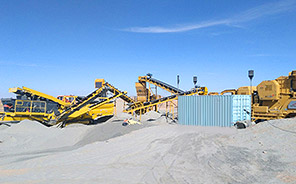A jaw crusher’s automatic hydraulic system circuits are designed to ensure smooth operation, overload protection, and automatic adjustment of the crusher settings (such as the closed-side setting or CSS). These circuits typically include hydraulic cylinders, valves, pumps, accumulators, and control systems.
Key Components of a Jaw Crusher Hydraulic System:
1. Hydraulic Cylinders – Used to adjust the crusher’s discharge opening (toggle plate movement).
2. Hydraulic Pump – Supplies pressurized oil to the system.
3. Accumulator – Stores hydraulic energy for quick response during overload conditions.
4. Pressure Relief Valves – Protect the system from excessive pressure.
5. Directional Control Valves – Regulate oil flow to extend or retract hydraulic cylinders.
6. Sensors & PLC (Programmable Logic Controller) – Enable automatic adjustments based on load conditions.
—
Typical Hydraulic Circuits in a Jaw Crusher:
# 1. Overload Protection Circuit
– If uncrushable material enters the chamber, excessive force builds up.
– A pressure relief valve opens, diverting oil to an accumulator or tank.
– The hydraulic cylinder retracts slightly to allow the material to pass (tramp release).
– Once cleared, the system resets automatically.
# 2. Automatic CSS Adjustment Circuit
– A PLC monitors crusher performance and adjusts the CSS via hydraulic cylinders.
– Position sensors provide feedback to maintain optimal crushing settings.
– Servo valves or proportional valves control cylinder movement precisely.
# 3. Toggle Tensioning Circuit
– Maintains proper tension on the toggle plate using hydraulic pressure.
– A pressure-compensated pump ensures consistent force.
 # 4. Hydraulic Power Unit (HPU) Circuit
# 4. Hydraulic Power Unit (HPU) Circuit
– Includes:
– Electric motor-driven pump
– Oil reservoir with filtration
– Heat exchanger (if needed)
– Pressure switches for monitoring
—
Example Hydraulic Circuit Diagram:
“`
[Pump] → [Filter] → [Accumulator] → [Directional Valve] → [Cylinder]
↑ ↓
[Pressure Relief] ← [Check Valve]
“`
1. The pump supplies oil to the accumulator for energy storage.
2. The directional valve controls cylinder movement (extend/retract).
3. The relief valve preve overpressure.
overpressure.
4. Sensors provide feedback for automated adjustments.
—
Advantages of Automatic Hydraulic Systems:





Leave a Reply